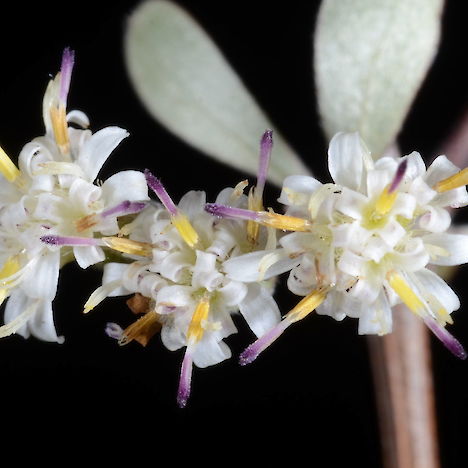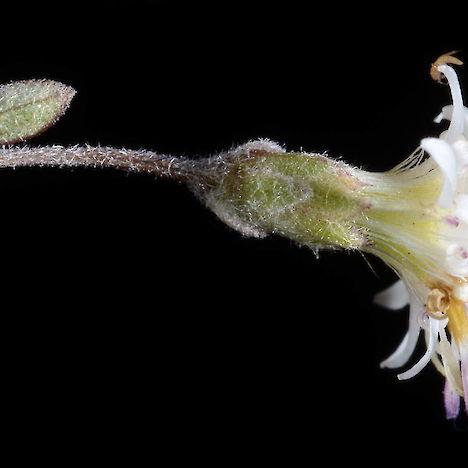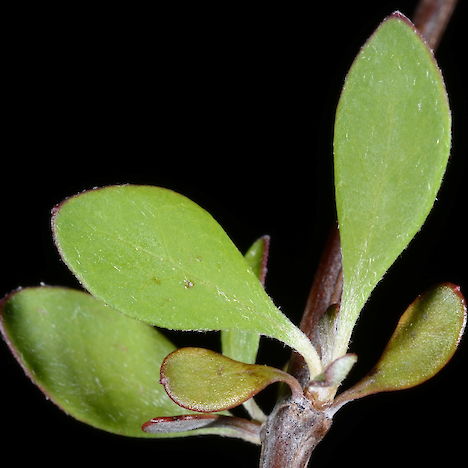Threat category:
Threatened: Nationally Endangered?Regions:
Hawkes Bay, WellingtonDistribution:
Central and eastern North Island
Key Features
- Deciduous shrub or small tree to 3 m tall, with rough bark on spreading branches.
- Small, light green, spoon-shaped leaves, up to 3 cm long, are arranged in opposite pairs on slightly flattened branchlets.
- Small, white flower heads occur in clusters of 1-6, and appear at the same time as, or later than, new leaves.
- The small seeds are fluffy for wind dispersal.
Distribution and Habitat
- Central North Island. Known from only three locations: Taihape, eastern Wairarapa and western Hawkes Bay.
- Occurs in lowland to montane areas in forest or on forest margins, always on high fertility sites such as river flats, limestone, stream banks, oxbows and hill slopes.
Threats
- Habitat modification and loss.
- Regeneration failure due to competition with grasses and weeds.
- Smothering by old mans beard and muehlenbeckia.
Management Opportunities
- Survey for new locations.
- Mark known sites.
- Protection of habitat.
- Weed control can include spraying of grass beneath trees following seedfall to promote seedling recruitment.
- Ensure that forest owners are aware of potential habitats and can recognise the species.
Monitoring Options
- Check existing populations annually
- Report new locations to DOC, NZPCN
Further Information and Support
- New Zealand Plant Conservation Network (NZPCN). http://www.nzpcn.org.nz
- Weed control - Department of Conservation, Regional Councils.
- References
- Dopson et al. (1999). The conservation requirements of New Zealand’s nationally threatened vascular plants. Threatened Species Occasional Publication 13. Department of Conservation, Wellington.
- Peter de Lange, Peter Heenan, David Norton, Jeremy Rolfe and John Sawyer (2010). Threatened Plants of New Zealand. Canterbury University Press, Christchurch. 472 pp.




